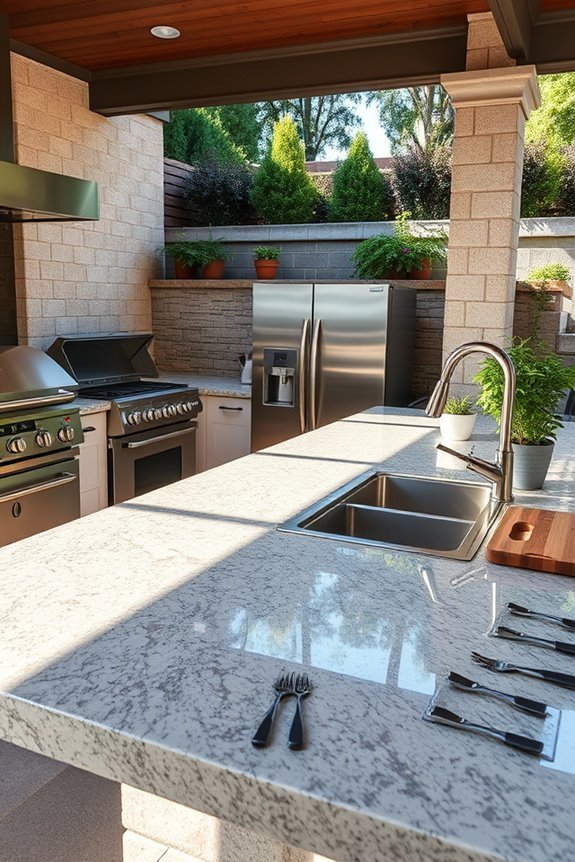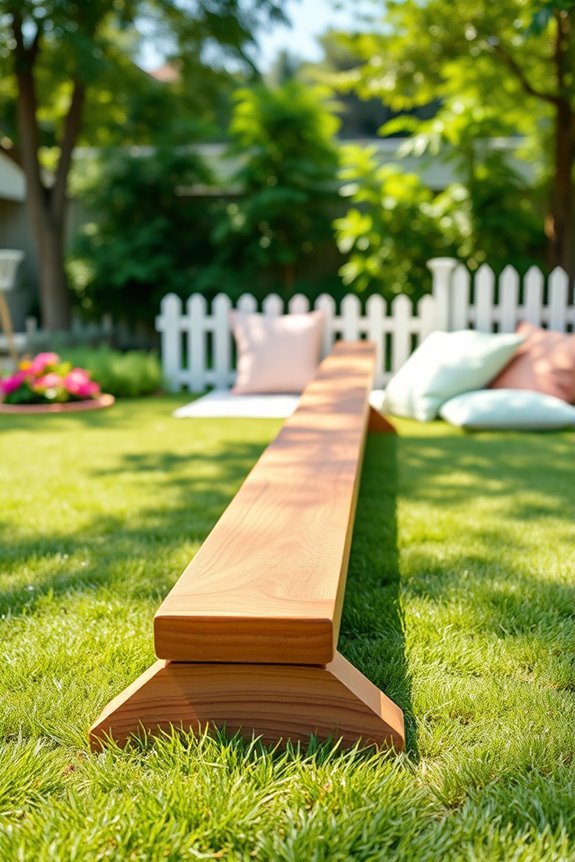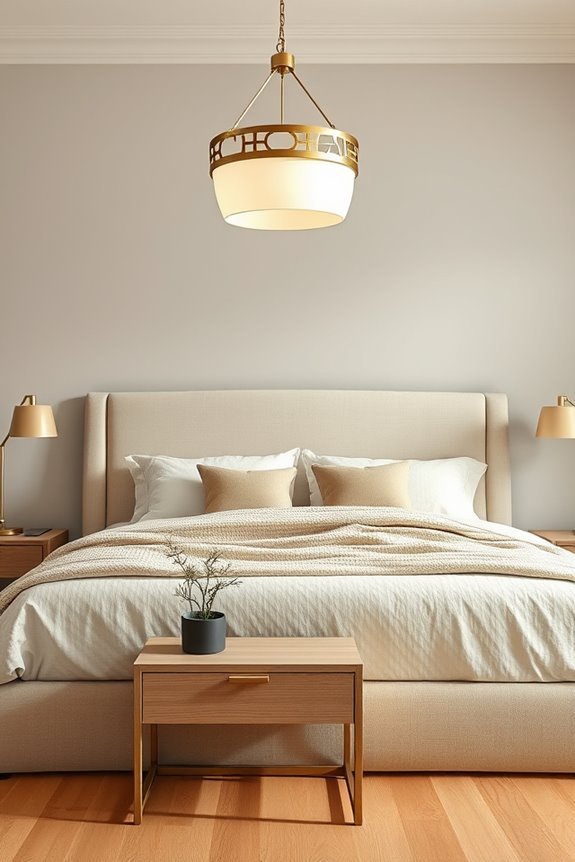How to Connect PVC Pipe Without Glue: Alternative Joining Methods
If you’re looking to connect PVC pipes without glue, there are several effective methods to consider:
- Mechanical Fittings: Use clamps and couplings for easy assembly and disassembly.
- Compression Fittings: These utilize rubber gaskets to create secure joints.
- Push-Fit Connectors: Simply push the pipes into place for a quick and easy installation.
- O-Ring Seals: These provide a reliable seal without the need for adhesives.
These methods not only allow for a flexible setup but also make maintenance simpler. Explore these alternatives to enhance your plumbing projects efficiently.
Overview of PVC Pipe Connection Methods
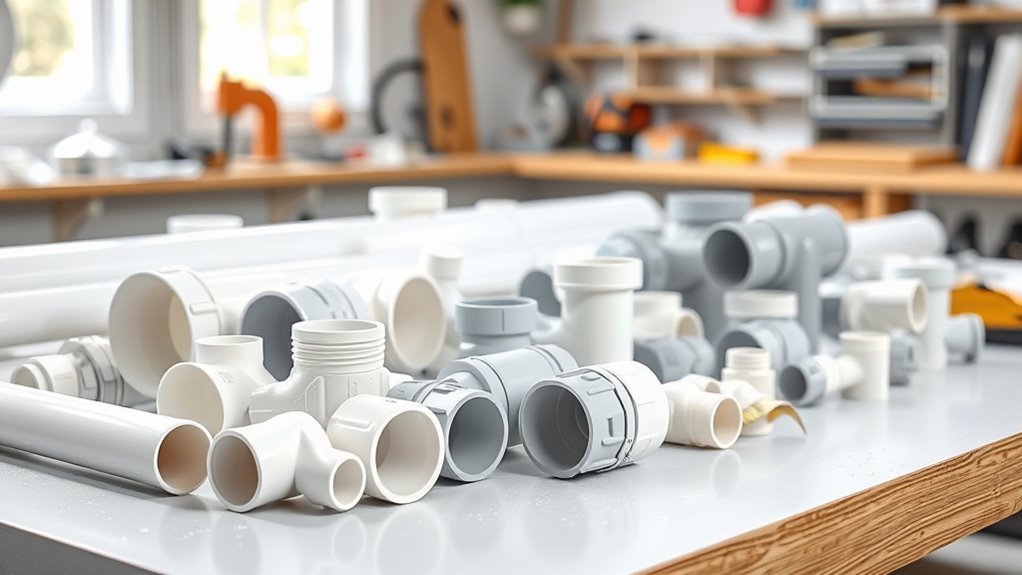
While many are familiar with glue for PVC pipe connections, there are effective alternatives.
Here are three methods:
- Mechanical Fittings: These include clamps or couplings that connect pipe ends without adhesives, allowing for easy disassembly.
- Heat Fusion: This involves heating the ends of the PVC pipes and pressing them together, creating a strong, permanent bond once cooled.
- Threaded Connections: Using threaded fittings, pipes can be securely screwed together for a reliable connection.
Each method has its specific advantages based on your project needs and the desired permanence of the connection.
Importance of Alternative Joining Techniques
Alternative joining techniques for PVC pipe are ideal for projects that require adaptability and cost efficiency.
These methods allow for easy adjustments as project needs evolve and are particularly advantageous for temporary installations, where quick disassembly is crucial.
If you’re looking for a flexible and budget-friendly solution for your PVC piping needs, these techniques are worth considering.
Flexibility in Projects
When working on plumbing or construction projects, flexibility in joining techniques can significantly enhance your efficiency.
Adapting your methods to suit unique challenges—such as tight spaces or time constraints—can lead to better outcomes. For example, using mechanical fittings or compression joints may be more effective than traditional gluing in certain situations.
This adaptability not only speeds up installation but also reduces the risk of damaging surrounding structures.
Cost-Effective Solutions
Exploring cost-effective plumbing solutions can save both professionals and DIY enthusiasts money and time.
Consider alternative joining methods for PVC pipes, such as rubber gaskets, compression fittings, or threaded connections. These options eliminate the need for adhesives, reducing material costs and labor time.
Non-glue techniques also allow for easier disassembly, simplifying repairs and modifications. This flexibility is particularly beneficial in large-scale projects with many connections.
Temporary Installations Advantage
Many temporary installations can greatly benefit from non-glue joining techniques for PVC pipes. These methods enable quick assembly and disassembly, making them perfect for projects requiring flexibility. By avoiding adhesives, users can easily modify or relocate pipes without the hassle of cutting and rejoining.
Advantages and Considerations of Non-Glue Joining Techniques
| Advantages | Considerations |
|---|---|
| Easy to disassemble | May not provide permanent seals |
| Time-efficient assembly | Requires careful alignment |
| Cost-effective for short-term use | Limited pressure tolerance |
This adaptability is crucial in fields like construction and event management, where temporary plumbing setups are often needed. By using alternative joining techniques, users can ensure efficient and effective temporary installations, meeting their project requirements seamlessly.
Mechanical Fittings: An Overview
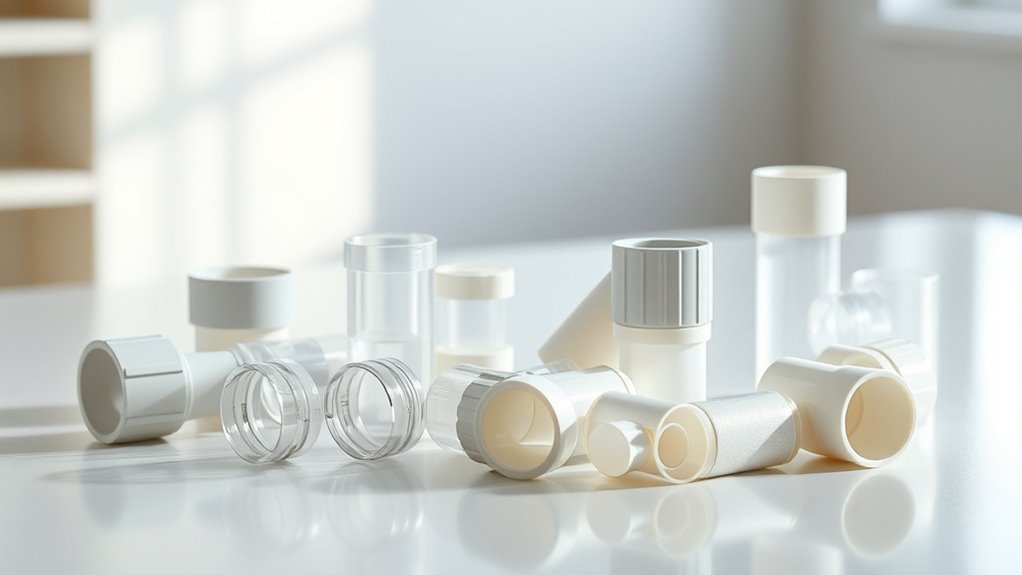
Mechanical fittings provide a reliable and efficient way to connect PVC pipes without the use of adhesives.
This guide covers the different types of mechanical fittings available, their benefits over traditional methods, and key installation techniques.
Types of Mechanical Fittings
When seeking alternatives to traditional PVC pipe connections, mechanical fittings are an effective option that connects pipes without adhesives. Here are the main types of mechanical fittings you should consider:
| Type of Fitting | Description |
|---|---|
| Couplings | Joins two pipe ends together |
| Tees | Allows for branching connections |
| Elbows | Creates angled connections |
| Flanges | Enables easy disassembly |
These fittings offer versatility for various plumbing and construction projects, providing reliable connections tailored to your needs.
Advantages of Mechanical Connections
Mechanical connections in plumbing offer significant advantages over traditional adhesive methods, making them an ideal choice for both professionals and DIY enthusiasts.
Here are the key benefits:
- Reusability: Easily disassemble and reassemble mechanical connections for repairs or modifications, reducing waste.
- Quick Installation: Mechanical fittings save time since they don’t require lengthy curing periods like adhesives.
- Instant Functionality: Unlike glued joints, mechanical connections are ready for use immediately, minimizing downtime.
- Temperature Tolerance: They can handle a broader range of temperatures, making them suitable for diverse environments.
These advantages enhance both efficiency and flexibility in plumbing applications, making mechanical connections a preferred option.
Installation Techniques Explained
When installing mechanical fittings, follow these essential steps to ensure a reliable connection:
- Select the Right Fittings: Choose fittings that match your pipe size and application requirements.
- Prepare the Pipes: Ensure the pipe ends are clean and free of debris for a secure fit.
- Align and Insert: Align the pipes with the fitting and make sure they are fully inserted to the required depth.
- Tighten Carefully: Tighten the fittings evenly to prevent leaks. Use a torque wrench if needed to avoid over-tightening, which can cause damage.
- Inspect Your Work: Check all connections for proper alignment and tightness to ensure compliance with local plumbing codes and standards.
Following these steps will help you achieve a successful installation of mechanical fittings.
Compression Fittings Explained
Compression fittings are an excellent choice for connecting PVC pipes without adhesive. They offer a secure joint through a mechanical mechanism, making them suitable for various plumbing needs.
Benefits of Compression Fittings:
- Easy Installation: No special tools are needed, allowing for quick and hassle-free assembly.
- Reusability: These fittings can be easily disassembled and reused, providing cost savings for temporary plumbing setups.
- Effective Sealing: Equipped with rubber gaskets, they create a reliable seal that prevents leaks.
- Material Compatibility: They can connect different types of pipe materials, providing flexibility for your plumbing projects.
For efficient plumbing solutions, consider using compression fittings for their simplicity and versatility.
Using Push-Fit Connectors

Push-fit connectors are an ideal solution for connecting PVC pipes without adhesives, making installation quick and hassle-free.
Simply push the pipe into the fitting, and the internal mechanism securely grips it, ensuring a watertight seal that prevents leaks.
These connectors require no special tools, making them perfect for both DIY projects and professional plumbing.
They can also be easily removed and reused, providing flexibility for adjustments in your plumbing system.
Compatible with various pipe sizes, push-fit connectors are versatile for any plumbing task.
Choose push-fit connectors for efficient and reliable PVC pipe connections.
Slip Couplings for PVC Pipe
Slip couplings are an effective solution for connecting PVC pipes without glue, making them ideal for quick and easy assembly or disassembly.
Here’s why you might need slip couplings:
- Simple Installation: They require no special tools or adhesives, making setup straightforward.
- Easy Adjustments: Slip couplings allow for effortless modifications or repairs.
- Reliable Durability: Designed to endure various environmental conditions.
- Cost Savings: Eliminating glue reduces overall project expenses.
These benefits make slip couplings a favored choice for both DIY projects and professional installations.
Threaded Fittings for PVC Connections
Threaded fittings offer a convenient way to connect PVC pipes without glue, making them ideal for DIY plumbing projects.
This guide will outline the different types of threaded fittings and provide essential installation tips to ensure a secure and leak-free connection.
Understanding these fittings is crucial for anyone looking to achieve effective plumbing solutions efficiently.
Types of Threaded Fittings
When connecting PVC pipes without glue, threaded fittings are a reliable choice that allows for easy assembly and disassembly.
Here are the main types of threaded fittings you may need:
- Male Adapter: Connects to female-threaded pipes or fittings with its external threads.
- Female Adapter: Connects to male-threaded pipes or fittings, featuring internal threads.
- Coupling: Joins two male or female threaded pipes in a straight line.
- Elbow: Changes the direction of the pipe, available in various angles, and can be either male or female threaded.
These fittings provide the flexibility to create customized plumbing systems without the need for glue.
Installation Tips and Techniques
To connect PVC pipes using threaded fittings effectively, follow these essential steps to ensure a secure and leak-free system:
- Prepare the Pipe Ends: Ensure the ends of the PVC pipes are clean and free from debris for a proper seal.
- Use Thread Sealant Tape: Wrap thread sealant tape around the male threads in the direction of the threads. This helps create a tight seal and prevents leaks.
- Assemble the Connection: Start by hand-tightening the fittings. Then, use a wrench for additional torque, but be careful not to overtighten, as this can damage the fittings.
- Check for Leaks: After installation, run water through the system to identify any leaks. Address any weak points as needed.
Soldering PVC Pipes: A Step-by-Step Guide
Soldering PVC pipes creates strong, leak-proof joints without adhesives. Here are the essential steps to solder PVC pipes effectively:
- Clean the Surface: Ensure the pipe ends are free from dirt and contaminants.
- Heat the Joint: Use a soldering iron to evenly heat the joint where the pipes connect.
- Apply Solder: Melt solder into the heated joint, filling the gap between the pipes.
- Cool and Inspect: Let the joint cool completely before checking for leaks.
This method ensures durability and a clean finish for your plumbing projects.
Using Hose Clamps for Secure Connections
When connecting PVC pipes without glue, hose clamps are a reliable choice for ensuring secure connections.
To achieve the best results, select hose clamps that match the size and material of your pipes.
Proper installation techniques are crucial for creating durable and leak-free joints.
Selecting Appropriate Hose Clamps
Choosing the right hose clamps is crucial for secure connections in PVC pipe assemblies. Here’s a quick guide to selecting the best option for your needs:
- Material: For corrosion resistance, choose stainless steel clamps. If the application is less demanding, plastic clamps are a lightweight alternative.
- Size: Measure the pipe diameter to ensure the clamps fit tightly without requiring excessive force.
- Type: Use worm gear clamps for adjustable tension; spring clamps are ideal for quick installation in low-pressure situations.
- Strength: For high-pressure systems, select heavy-duty clamps to prevent leaks and ensure durability.
Proper Installation Techniques
To ensure a secure connection with hose clamps on PVC pipes, follow these essential installation techniques:
- Cut the Pipes Cleanly: Use a proper cutting tool to ensure the pipes are cut straight for a snug fit.
- Deburr the Edges: Remove any sharp edges on the pipe ends to prevent compromising the seal.
- Position the Hose Clamp: Place the clamp around the joint, ensuring it aligns evenly with the pipe’s circumference.
- Tighten Gradually: Tighten the clamp slowly and evenly to avoid damaging the pipe. A torque wrench can help achieve the correct tension.
- Check for Leaks: After installation, inspect the connection for any leaks, ensuring the hose clamp securely holds the pipes for optimal performance.
Advantages of Hose Clamps
When looking for a reliable solution to secure PVC pipe connections without glue, hose clamps stand out due to their numerous advantages:
- Easy Installation: Hose clamps can be tightened quickly with a screwdriver, making the assembly process efficient.
- Adjustable Fit: They easily accommodate various pipe sizes and can be adjusted for a perfect fit.
- Reusability: Unlike glued connections, hose clamps can be removed and reused, facilitating modifications or repairs.
- Cost-Effective: Generally inexpensive, hose clamps provide a budget-friendly option for plumbing projects.
These benefits make hose clamps a popular choice for both DIY enthusiasts and professionals in plumbing tasks.
Heat Welding PVC Pipes
Heat welding PVC pipes is an effective method for creating strong, permanent connections without the use of adhesives. This technique involves melting the PVC surfaces with a heat source, allowing the pipes to fuse as they cool.
It’s particularly advantageous for large-diameter pipes or applications where mechanical stress is a concern.
Advantages of Heat Welding PVC Pipes:
- Strong, Permanent Bond: Creates a durable connection that withstands pressure.
- No Adhesives Needed: Eliminates concerns about adhesive failure.
- Ideal for Large Sizes: Suitable for larger pipe diameters.
- Quick Process: Saves time compared to other joining methods.
- Waterproof Connection: Ensures leak-free joints.
Considerations:
- Requires Special Equipment: Necessary tools may not be readily available.
- Skills Required: Proper technique is essential for effective welding.
- Heat Control is Essential: Precise temperature management is crucial to avoid damage.
- Not Ideal for Small Pipes: Best suited for larger, sturdier applications.
- Risk of Pipe Damage: Improper technique can compromise pipe integrity.
This method is an excellent choice for those looking to ensure a reliable and durable plumbing solution.
PVC Pipe Adapters: When to Use Them
When working with PVC pipes, it’s often necessary to use PVC pipe adapters to create efficient and effective plumbing connections.
Here are the main situations where these adapters are essential:
- Size Variation: Use an adapter when transitioning from a larger diameter pipe to a smaller one.
- Material Change: Employ adapters to connect PVC pipes to different materials, such as metal or rubber.
- Direction Change: Utilize adapters for altering flow direction, particularly in corner installations.
- Repair Needs: Choose adapters when replacing damaged sections without needing to overhaul the entire system.
Using these adapters enables flexible plumbing solutions without the need for glue, enhancing the overall efficiency of your project.
Utilizing O-Ring Seals
O-ring seals are crucial for creating leak-proof connections in PVC pipe systems. Made from rubber or silicone, these circular seals fit securely into grooves on fittings, effectively blocking moisture and air.
Unlike traditional glue methods, O-rings offer flexibility during installation, allowing for minor adjustments without compromising the seal. They are also easy to replace if worn, making them ideal for long-term maintenance.
This is especially useful in situations where pipes need to be disassembled and reassembled, facilitating easy access and repairs without adhesives.
Benefits of Non-Glue Methods
Benefits of Non-Glue Methods for Connecting PVC Pipes
If you’re looking for effective ways to connect PVC pipes without glue, non-glue methods offer several advantages:
- Easy Disassembly: These connections allow for quick disassembly, making repairs and modifications straightforward without damaging the pipes.
- Reduced Curing Time: Non-glue connections can be used immediately, saving valuable time on your projects compared to glued joints that require curing.
- Environmental Benefits: By minimizing chemical use, non-glue options are more eco-friendly, appealing to environmentally conscious users.
- Temperature Resilience: Many non-glue methods perform well across varying temperatures, decreasing the likelihood of joint failure.
These benefits make non-glue methods a practical choice for both professionals and DIY enthusiasts working with PVC pipe connections.
Common Mistakes to Avoid
When connecting PVC pipes without glue, it’s crucial to avoid common mistakes to ensure a strong and leak-free connection. Here are key pitfalls to watch out for:
- Cleaning and Preparation: Always clean and prepare the pipe surfaces thoroughly. Neglecting this step can result in weak connections.
- Correct Fittings and Sizes: Use appropriate fittings and ensure that pipe sizes match. Mismatches can lead to leaks and structural problems.
- Connection Time: Give adequate time for connection methods, like heat or solvent welding, to set properly before applying any pressure.
- Proper Alignment: Ensure that the pipes are properly aligned. Misalignment can compromise the integrity of the connection.
- Support: Don’t underestimate the need for additional support. Insufficient support can cause pipes to sag or disconnect over time.
Maintenance Tips for PVC Connections Without Glue
To ensure the longevity and reliability of PVC connections without glue, follow these essential maintenance tips:
- Regular Inspections: Frequently check for wear, cracks, or leaks to identify issues early.
- Clean Joints: Keep connections free from dirt and debris to prevent weakening.
- Pressure Management: Ensure the system operates within recommended pressure levels to avoid stressing joints.
- Temperature Monitoring: Be aware of temperature changes that can affect joint integrity.
Conclusion
Connecting PVC pipes without glue offers practical solutions for both DIY projects and professional applications. For example, push-fit connectors allow for quick and easy assembly and disassembly, making them ideal for temporary setups like irrigation systems. By exploring various joining methods, you can find the most effective solution for your plumbing needs, ensuring durability and ease of maintenance without the hassle of adhesives.


